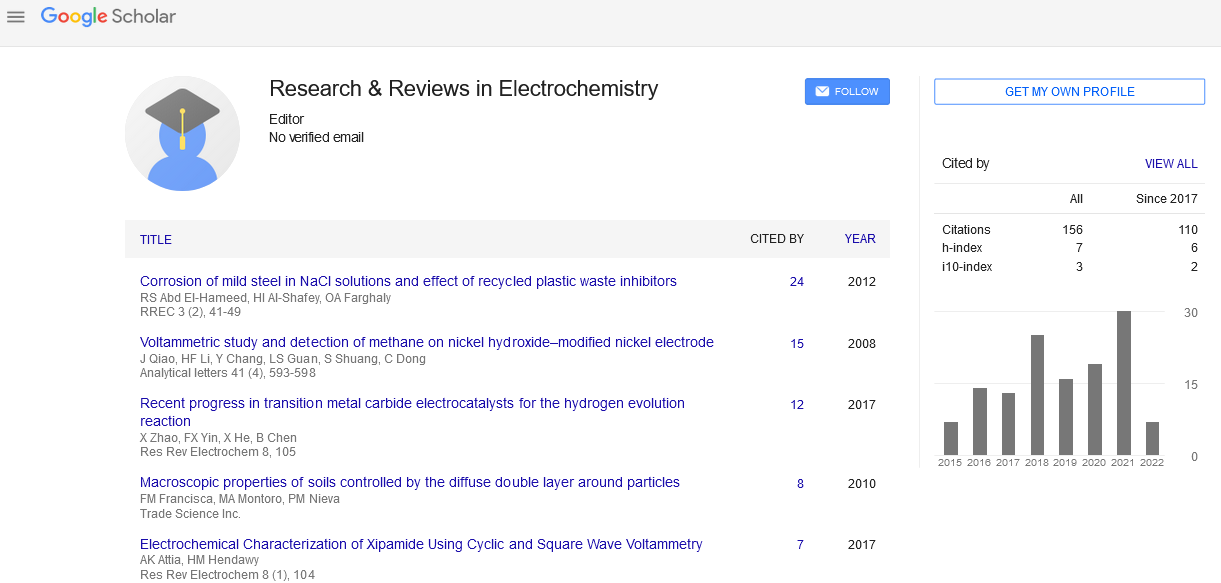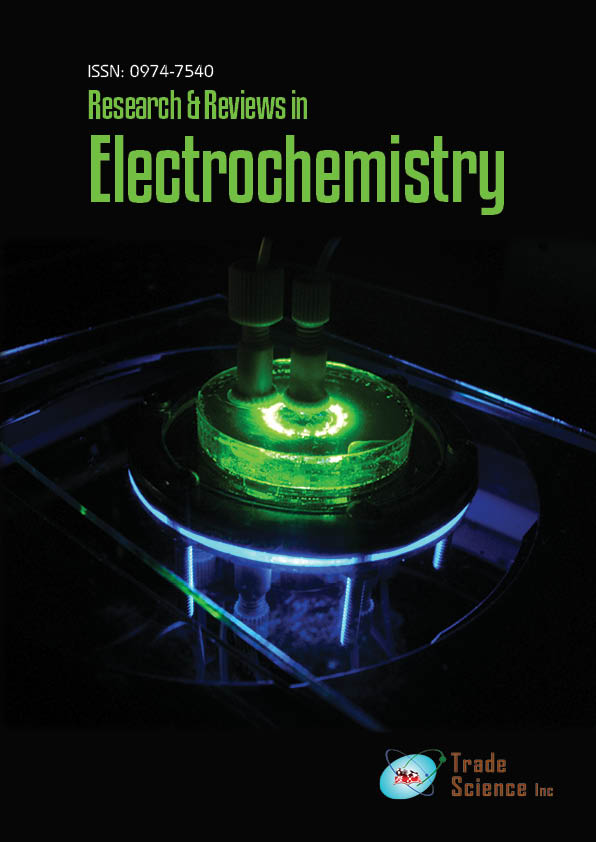Editorial
, Volume: 8( 1)Special Issue on Nanoelectrochemistry
- *Correspondence:
- Ruiyong Chen, Transfer Center for Sustainable Electrochemistry, Saarland University, 66125 Saarbrucken, Germany, E-mail: r.chen@kist-europe.de
Received: May 31, 2017; Accepted: May 31, 2017; Published: June 1, 2017
Citation: Chen RY. Special Issue on Nanoelectrochemistry. Res Rev Electrochem. 2017;S1:e101.
Abstract
Editor Note
The Journal of Research and Reviews in Electrochemistry publishes original research findings that demonstrate significant scientific discoveries in all areas of electrochemistry. There is a growing understanding that nanostructured materials can promote the energy and resource-efficiency for their applications in related fields for sustainable development and clean environment. Considerable efforts are being made to generate and synthesize nanomaterials to pursue such goals.
The current special issue focuses on topics that bridge the applied electrochemistry and nanoscience. Five papers were selected after a thorough peer-review following Research and Reviews in Electrochemistry reviewing procedure, including: two review papers, one short communication and two research articles.
It is essential to produce nanosized materials in a facile, environmentally-friendly and cost-effective way. Graphene oxide can be produced by a well-established chemical route based on the Hummers method. Further post-treatment to reduce the graphene oxide to graphene is necessary for various applications. In the review paper by Yang, a photo-irradiation reduction route to produce graphene from graphite oxide with a short reaction time has been discussed. Such method can prevent restacking of graphene nanosheets and thus can offer large surface area for capacitive energy storage.
In the short communication paper by Hu et al., conductive polymers of PEDOT and PSS were used as functional binder to enhance the interfacial ion transportation for the nanostructured Sn-Se electrode materials. Such strategy for fabricating hybrid electrode composites with fast charge transfer is suggestive to design batteries with good rate performance.
Li et al. demonstrated a reaction-controlled phase-transfer route to fabricate inter-crossed carbon nano-rings (with a diameter of a few nanometers) from activated carbon. The amorphous carbon from the activated carbon can be selectively removed by using oxidizing agents of phosphomolybdic acid and H2O2 at 100°C, leaving the graphited regions. Then, the broken carbon-bonds reassembled into nano-rings. Such a simple and one-step process is promising for up-scaling fabrication.
Latushkina et al. presented a way to generate nanostructured transition metal nitride coatings from plasma flows by means of a vacuum-arc technique. Multicomponent coatings with fine control and uniform structure have been obtained and demonstrated high corrosion resistance.
Electrochemical hydrogen evolution reactions (HER) proceed on the surface of electro-catalysts. Typically, Pt is used owing to its high electro-catalytic activity. Great efforts have been made to replace Pt with non-noble metal catalysts. Transition metal carbides with adjustable electronic structure have exhibited excellent catalytic activity towards the HER. The reaction mechanism, selection of materials (Cr, Mo and W carbides), their electrochemical performance for water splitting and challenges we are facing have been overviewed by Yin et al.
The papers in this special issue will be of great interest and relevance to a broad range of the scientific community. I would like to thank all authors for their contributions to this special issue. I acknowledge our reviewers for their invaluable support and contributions. Their dedicated effort made it possible to publish this special issue in a short time.

